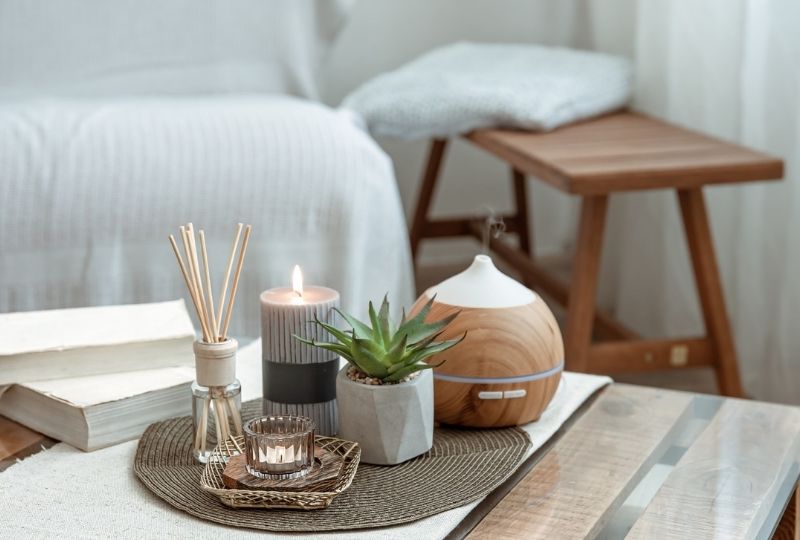In today’s fast-paced world, having a calm and peaceful space at home is essential for reducing stress, improving mental clarity, and promoting relaxation. A Zen space is a dedicated area where you can unwind, meditate, or simply recharge.
Creating a Zen space doesn’t require a lot of money or a large area—you can transform a small corner of your home into a personal sanctuary with just a few mindful changes.
In this guide, you’ll learn how to design a Zen-inspired space that helps you feel calm, grounded, and refreshed every day.
Why Having a Zen Space Matters
✅ Reduces stress and anxiety → Helps you disconnect from daily pressures.
✅ Encourages mindfulness and relaxation → Supports meditation, yoga, or deep breathing.
✅ Improves focus and creativity → A clutter-free environment enhances mental clarity.
✅ Promotes better sleep and emotional well-being → Helps the mind and body unwind.
Now, let’s explore how to create a Zen space in your home.
10 Steps to Designing a Zen Space
1. Choose a Quiet and Comfortable Area
Your Zen space should be in a low-traffic, peaceful area where you can relax without distractions.
✅ Best Locations:
- A corner of your bedroom or living room.
- A small section of your balcony or garden.
- A spare room or unused nook in your home.
✅ Why It Works: A quiet space helps you disconnect from external noise and stress.
2. Declutter and Keep It Minimal
A clean and clutter-free environment creates a sense of peace and order.
✅ How to Declutter:
- Remove unnecessary items and only keep essentials.
- Use hidden storage or baskets to organize items.
- Keep surfaces clear and simple.
✅ Why It Works: A minimal space reduces distractions and enhances relaxation.
3. Use Soft, Natural Lighting
Lighting plays a huge role in creating a calming atmosphere.
✅ Best Lighting Choices:
- Soft, warm lights (avoid harsh overhead lighting).
- Candles or Himalayan salt lamps for a soothing glow.
- Fairy lights to create a cozy ambiance.
✅ Why It Works: Dim lighting promotes relaxation and mindfulness.
4. Incorporate Natural Elements
Nature has a calming effect on the mind and body.
✅ Ways to Bring Nature Into Your Zen Space:
- Add indoor plants like peace lilies, snake plants, or bonsai trees.
- Use wooden or bamboo decor for a natural feel.
- Display stones, crystals, or seashells to enhance grounding energy.
✅ Why It Works: Natural elements promote balance and reduce stress.
5. Choose Soothing Colors
The colors in your Zen space should evoke peace and relaxation.
✅ Best Zen Colors:
- Soft neutrals (white, beige, gray) → Creates a clean, peaceful look.
- Earth tones (green, brown, soft blues) → Brings a sense of nature.
- Pastels (lavender, light pink) → Adds warmth and serenity.
✅ Why It Works: Soft colors calm the mind and improve focus.
6. Add Comfortable Seating or a Meditation Cushion
Comfort is key to fully enjoying your Zen space.
✅ Seating Ideas:
- A floor cushion or meditation pillow for sitting comfortably.
- A cozy chair or bean bag for reading and relaxation.
- A yoga mat if you plan to stretch or meditate.
✅ Why It Works: Comfortable seating makes longer relaxation sessions more enjoyable.
7. Use Relaxing Scents and Aromatherapy
Scents have a powerful effect on mood and relaxation.
✅ Best Essential Oils for Relaxation:
- Lavender → Reduces stress and promotes sleep.
- Sandalwood → Enhances meditation and spiritual connection.
- Eucalyptus → Refreshes the mind and clears energy.
✅ How to Use Aromatherapy:
- Light scented candles or incense.
- Use an essential oil diffuser.
- Place dried herbs or potpourri in a small bowl.
✅ Why It Works: Pleasant scents stimulate relaxation and mindfulness.
8. Create a Sound Sanctuary
Sound can enhance the peaceful atmosphere of your Zen space.
✅ Best Sounds for a Zen Environment:
- Soft instrumental music (piano, flute, or acoustic guitar).
- Nature sounds (rain, ocean waves, birds chirping).
- Guided meditation or chanting for deeper relaxation.
✅ Why It Works: Soothing sounds calm the nervous system and improve focus.
9. Include Meaningful Decor or Symbols
Adding personal or spiritual elements can make your Zen space more meaningful.
✅ Ideas for Meaningful Decor:
- A small Buddha or spiritual statue.
- Inspirational quote frames or affirmations.
- A Zen sand garden or meditation stones.
✅ Why It Works: Symbolic decor inspires positivity and mindfulness.
10. Make It a Technology-Free Zone
A Zen space should be free from distractions, including electronic devices.
✅ How to Reduce Tech Distractions:
- Keep your phone on silent or in another room.
- Avoid TVs or screens in your Zen space.
- Use a traditional clock instead of a phone alarm.
✅ Why It Works: Less technology creates a calm and focused environment.
How to Use Your Zen Space
Your Zen space can be used for different relaxation activities:
🔹 Meditation → Practice deep breathing and mindfulness.
🔹 Yoga or stretching → Release physical and mental tension.
🔹 Journaling → Write reflections, gratitude, or affirmations.
🔹 Reading or listening to calming music → Escape from stress.
🔹 Simply sitting in silence → Recharge and enjoy the present moment.
Final Thoughts
A Zen space is a personal retreat for relaxation and self-care. By making small changes in your home, you can create an area that promotes peace, mindfulness, and emotional balance.
Start by choosing a quiet corner and adding a few calming elements—soon, your Zen space will become your favorite place to unwind!
Where in your home will you create your Zen space? 😊
